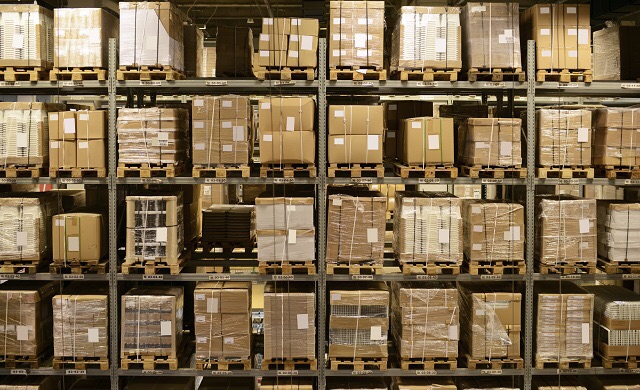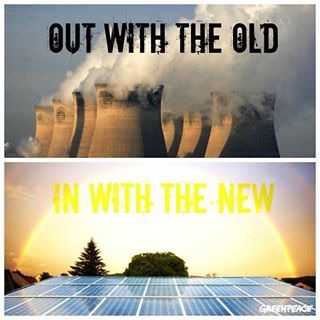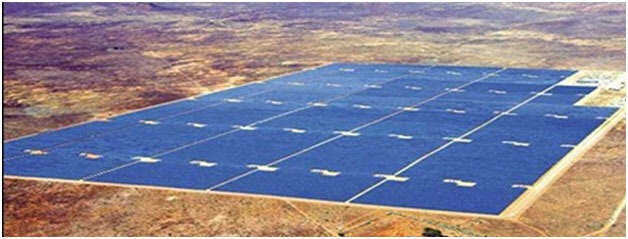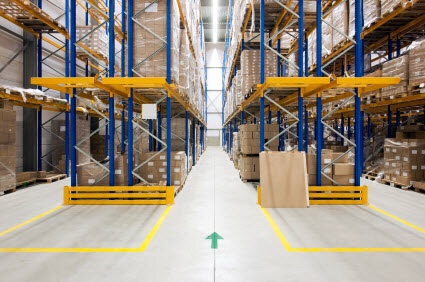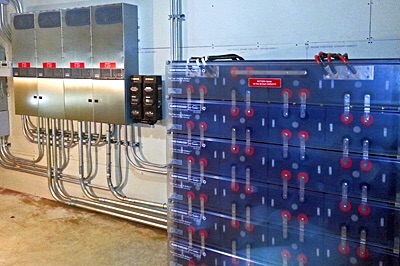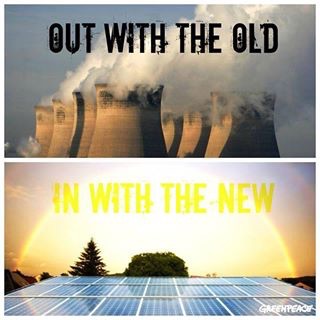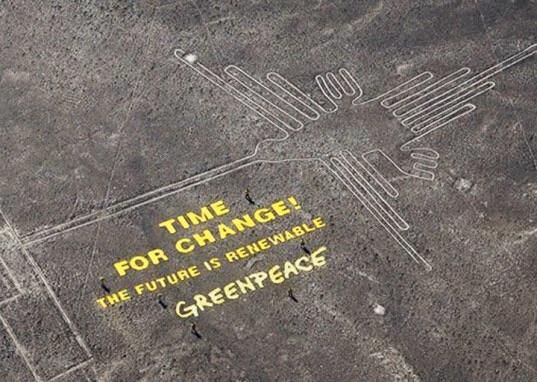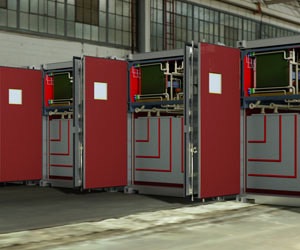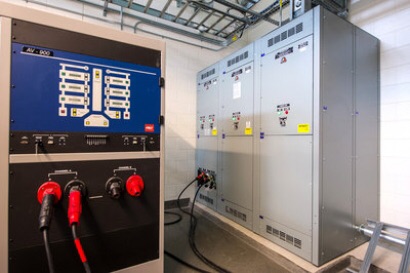|
JOIN OUR MAILING LIST |
|
5. Global Gazette 2015-04-10 Your Online World: #ClickClean or Dirty? Your Online World: #ClickClean or Dirty?Clicking Clean: How Companies are Creating the Green Internet
Fineprint.
AppleEnergy TransparencyScope and level of detail made publicly available on energy consumption of IT infrastructure. Apple’s aggressive pursuit of its commitment to power the iCloud with 100% renewable energy has given the company the inside track among the IT sector’s leaders in building a green Internet. Apple has made good on its pledge by building the largest privately owned solar farms at its North Carolina data center, working with its utility in Nevada to power its upcoming data center there with solar and geothermal energy, and purchasing wind energy for its Oregon and California data centers. Apple’s commitment to renewable energy has helped set a new bar for the industry, illustrating in very concrete terms that a 100% renewable internet is within its reach, and providing several models of intervention for other companies that want to build a sustainable Internet. Download the full report.

Apple energy sources 2013
Facebook continues to grow and dominate the global social media landscape with 1.23 billion monthly active users. Facebook has made huge strides forward since 2012 to become one of the clear green internet leaders. Radical improvements in transparency and efforts to deliver significant wind energy investment in Iowa have helped drive Facebook into the top tier of companies creating the green internet. By building on the advocacy it has started with energy utilities to drive more clean energy investment, and continuing to find ways to bring renewable energy to scale to power its data centers in North Carolina and Iowa, Facebook is setting a clear bar for other major social media networks and internet companies to follow. Download the full report.

Facebook energy sources 2013
Google has continued to lead the major internet brands in purchasing renewable energy at scale to power its massive online ecosystem. The company is now reporting electricity consumption of 3,315 GWh, with 34% of its operations powered by clean energy. Google’s use of power purchase agreements to procure clean energy has been adopted by others in the sector, like Microsoft, and it has successfully influenced utilities in Oklahoma and North Carolina to offer new renewable energy options by using its immense business clout. As Google expands its footprint to Latin America and Asia, it will need to maintain its innovative edge to make sure that it continues to source clean energy even in countries that feature dirty electric grids. Download the full report.

Google energy sources 2013
YahooYahoo has been expanding its online platform via acquisitions such as Tumblr, and it owns a stake in Alibaba, the Chinese e-commerce giant. While Yahoo has previously been a leader in clean energy procurement, it has lost ground as others have become more innovative and aggressive in increasing their renewable energy supply . Still, Yahoo’s decision to shift more capacity to its New York State data center and increase purchasing of hydropower means the company maintains a high percentage of renewable energy in its mix. Download the full report.

Yahoo energy sources 2013
MicrosoftWith the adoption of its “Carbon Neutral by 2013” plan in May 2012, Microsoft sought to project that it had become more proactive in managing its energy-related environmental footprint, however it has significant weaknesses. Microsoft has thus far relied heavily on buying Renewable Energy Credits (RECs) and carbon offsets, creating the appearance on paper of being clean but not altering Microsoft’s status quo supply of dirty electricity. Microsoft’s recent announcement to sign a long term purchase agreement for wind power near its Texas data center is an important development, and hopefully indicates that Microsoft has decided to join its competitors Google and Apple to apply its talents and resources toward building an internet that is green in real life, not just on paper. Download the full report.

Microsoft energy sources 2013
ebayeBay is one of the best known internet brands, but it has lagged behind other innovative companies in prioritizing access to renewable energy when choosing the location of its three data center facilities. However, eBay has recently taken several steps that indicate it is serious about changing the options it has to buy renewable electricity and otherwise reducing its data center energy footprint. Though still heavily reliant on coal, eBay’s Energy Dashboard has helped demonstrate an important innovation in providing meaningful data about its energy use, and eBay’s advocacy efforts in Utah have changed the landscape for companies that would like to have alternatives to the surrounding dirty grid. Download the full report.

ebay energy sources 2013
EquinixEquinix occupies a significant place in the digital economy, as the largest retail colocation provider in the U.S. Equinix customers include many of the other brands evaluated in this report, including Apple, Salesforce and Box, which all have made 100% renewable commitments. With over 100 data centers spread around the world, Equinix collectively consumed 1,830 GWh of electricity in 2012, the equivalent to 162,000 average U.S. homes. Download the full report.

Equinix energy sources 2013
IBMIBM is focusing on services delivered by cloud computing, announcing a $1.2 billion investment in expanding its global cloud business and data center fleet. IBM has had a solid track record of reducing its emissions over the past decade, but as it continues to scale its investments in cloud-related infrastructure, IBM needs to identify how it will secure a renewable electricity supply, and use its influence to demand clean energy and boost its direct renewable energy purchasing in the US. Download the full report.

IBM energy sources 2013
TelecityTelecity is one of the largest retail colocation providers in Europe, operating in 12 major markets across the continent and providing a European home for major online properties such as streaming music platform Spotify and professional social network Xing. While Telecity does have a goal to reduce its carbon emissions, there is plenty of room for improvement in increasing the amount of renewable energy it uses. Download the full report.

Telecity energy sources 2013
Amazon Web ServicesAmazon Web Services (AWS), owned by Amazon.com, has grown since its launch in 2006 into one of the largest digital ecosystems of the online world. With an impressive array of services and the ability to quickly scale based on demand, AWS now serves many of the most well-known online brands, including Netflix, Pinterest, Spotify, and Vine. Unfortunately, AWS has dropped further and further behind its competitors in building an internet that runs on renewable sources of energy, estimated at only 15%, and is the least transparent of any company we evaluated. Download the full report.

Amazon Web Services (AWS) energy sources 2013
Digital Realty TrustDigital Realty Trust (DRT) is the largest digital landlord in the world, with 131 data centers worldwide, roughly three-fourths of which are located in the US. Digital Realty operates on the wholesale end of the colocation spectrum, providing both entire data center properties to large customers like Equinix and Amazon Web Services, and also renting portions of facilities to meet the needs of large online properties such as Facebook, Rackspace, Salesforce, Google, Microsoft and Yahoo. Download the full report.

Digital Realty energy sources 2013
Dupont Fabros TechnologyDupont Fabros (DFT) is one of the largest wholesale data center colocation providers in the US, providing large blocks of data center capacity to a range of customers in several major markets, including companies like Facebook and Yahoo which also build their own datacenters. DFT’s largest market is Northern Virginia, with upwards of 200MW in data center capacity built or under construction there. Download the full report.

Dupont Fabros energy sources 2013
Twitter’s has changed the way people around the world communicate. Twitter does not yet own any data centers of its own, instead renting data center space from others. The microblogging platform has remained silent about the type and amount of electricity that is powering those data centers. Twitter remains at the bottom of the industry for energy transparency, disclosing no information about its energy footprint. Twitter lags behind its competitors in social media, Facebook, which took significant steps to increase transparency and increase its use of clean energy soon after it went public. Download the full report.

Twitter energy sources 2013
Other companies evaluated:RackspaceThough not a household name, Rackspace is well-known within the IT sector as one of the leading cloud and managed hosting providers, and a strong supporter of open-source computing platforms. Rackspace has begun to embrace a leadership role in supporting a digital economy that is powered with renewable energy. The company adopted a commitment to become 100% renewably powered in 2012 as part of a forward thinking energy policy, and is now in its early stages of operationalizing this commitment. Download the full report.

Rackspace energy sources 2013
SalesforceSalesforce is the biggest name in online enterprise software, growing at over 30% in 2013. Salesforce took a leadership position by committing in March 2013 to base its growth on renewable energy, adopting a 100% renewable policy and siting policy that puts priority on renewables. Salesforce now needs to show clearly how its policy is being implemented across its operations, especially as the company rapidly expands. Download the full report.

Salesforce energy sources 2013
OracleThe world’s second-largest software company, Oracle provides enterprise-scale software products and computer hardware systems to the world’s largest corporations. Oracle is now making a bigger play for cloud-based offerings, even partnering with Amazon Web Services to offer some of Oracle’s products via the AWS cloud. Oracle powers its own cloud services and solutions through its three main data centers in Texas, Colorado and Utah, with four smaller facilities elsewhere. Like others, Oracle has focused on efficiency in its servers and data centers, but it lags behind sector leaders in building a renewably powered digital economy. Download the full report.

Oracle energy sources 2013
Hewlett Packard (HP)HP both provides hardware to internet companies and is expanding its own cloud business to compete in the enterprise market. The company maintains an impressive level of corporate-wide transparency and accountability on reducing its emissions, but it could improve public disclosure on how it is applying its labs division’s innovation to reduce the energy footprint of its data center fleet. HP does have a corporate-wide emissions reduction target for 2020 that includes data centers.The company is slowly increasing its purchasing of renewable energy via a limited number of on-site solar installations and a mixture of direct purchasing and Renewable Energy Credits. However, HP is not showing the overall leadership needed to ensure its cloud expansion is driving demand for clean energy. Download the full report.

HP energy sources 2013
Verizon TerremarkVerizon Terremark, formed by Verizon’s $1.4 billion purchase of Terremark in 2011, has emerged as one of the larger telecom/cloud hybrid companies, and has been rapidly expanding since the merger to allow it to compete with AWS and others for the business and government cloud markets. While the parent company Verizon announced in April 2013 that it plans to invest over $100 million in renewable energy across its operations, it is unclear the extent to which this investment has helped drive deployment of renewable energy for the Verizon Terremark datacenters. Verizon reported over 165 MW of data center power consumption in 2012. *There is insufficient public data to evaluate Verizon Terremark’s energy footprint. Greenpeace encourages Verizon Terremark to release more data and will update our analysis in the future. Download the full report.

Verizon Terremark energy sources 2013AkamaiAkamai is one the largest global content distribution networks (CDN), helping the bigger brand names in this report and other online content providers deliver their content faster to users around the world. Akamai’s network is highly distributed, with over 127,000 servers spread across 1,100 data centers in 81 countries. Akamai’s highly distributed business model and relationships across the internet ecosystem put it in a unique position to leverage influence across its vendor network, particularly as a growing number of its content customers have explicit goals related to energy efficiency and renewable energy. *Akamai’s energy consumption is spread across 1,100 data centers around the world, making individual tracking difficult. Download the full report.

Akamai energy sources 2013
http://www.greenpeace.org/usa/en/campaigns/global-warming-and-energy/A-Green-Internet/clickingclean/#google |
| Back | Back to top |
